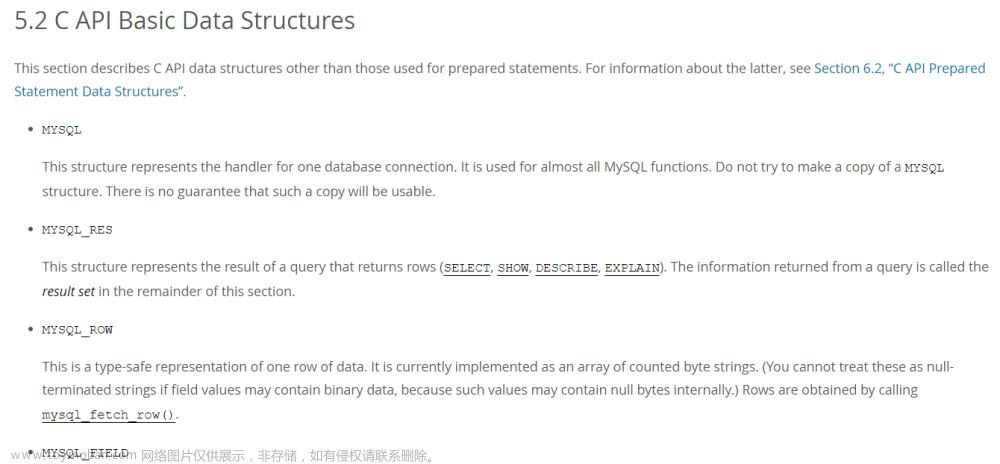
- 🎥 个人主页:Dikz12
- 📕格言:那些在暗处执拗生长的花,终有一日会馥郁传香
- 欢迎大家👍点赞✍评论⭐收藏
目录
创建线程
1.创建类继承Thread,重写run()
2.实现Runnable,重写run()
3.继承Thread,使用匿名内部类
4.使用lambda表达式(推荐)
线程启动
线程中断
1.手动设置标志位
2.使用内部自带的标志位(interrupt)
线程等待
线程状态
线程安全
synchronized(可重入锁) 使用方法
死锁
关于死锁问题
死锁能产生,一定涉及到四个必要条件
volatile关键字(解决内存可见性问题)
创建线程
1.创建类继承Thread,重写run()
class MyThread extends Thread {
@Override
public void run() {
//这个就是线程的入口方法
while (true) {
System.out.println("hello thread");
try {
Thread.sleep(1000);
} catch (InterruptedException e) {
e.printStackTrace();
}
}
}
}
public class Demo1 {
public static void main(String[] args) {
Thread t = new MyThread(); //向上转型
t.start();
while (true) {
System.out.println("hello main");
try {
Thread.sleep(1000);
} catch (InterruptedException e) {
e.printStackTrace();
}
}
}
}2.实现Runnable,重写run()
class MyRunnable implements Runnable {
@Override
public void run() {
while (true) {
System.out.println("hello thread");
try {
Thread.sleep(1000);
} catch (InterruptedException e) {
e.printStackTrace();
}
}
}
}3.继承Thread,使用匿名内部类
/* //实现了Runnable,匿名内部类的写法
Thread t = new Thread(new Runnable() {
@Override
public void run() {
while (true) {
System.out.println("hello thread");
try {
Thread.sleep(1000);
} catch (InterruptedException e) {
e.printStackTrace();
}
}
}
});*/
Thread t = new Thread() {
@Override
public void run() {
while (true) {
System.out.println("hello thread");
try {
Thread.sleep(1000);
} catch (InterruptedException e) {
e.printStackTrace();
}
}
}
};4.使用lambda表达式(推荐)
public static void main(String[] args) {
//lambda 表达式 本质上是一个匿名函数,用来实现回调函数
Thread t = new Thread(() ->{
while (true) {
System.out.println("hello thread");
try {
Thread.sleep(1000);
} catch (InterruptedException e) {
e.printStackTrace();
}
}
});
t.start();
while (true) {
System.out.println("hello main");
try {
Thread.sleep(1000);
} catch (InterruptedException e) {
e.printStackTrace();
}
}
}不单单只有上诉这几种,还有其它方式就不在演示了!
线程启动
线程启动是通过start(). 而不是run().
run(): 只是单纯的描述了当前线程要执行的内容.
start() : 才是真的会调用 系统api,在系统内核上创建线程.
线程中断
1.手动设置标志位
private static boolean isQuit = false; //成员变量
public static void main(String[] args) {
Thread t = new Thread(() -> {
while (!isQuit) {
System.out.println("线程开始");
try {
Thread.sleep(1000);
} catch (InterruptedException e) {
e.printStackTrace();
}
}
System.out.println("线程结束");
});
t.start();
try {
Thread.sleep(3000);
} catch (InterruptedException e) {
e.printStackTrace();
}
isQuit = true;
System.out.println("设置 isQuit 为 true");
}要注意的是:这里用的是lambda表达式的写法,会发生变量捕获,自动捕获上层域涉及的局部变量.
是有前提限制的,就是只能捕获一个要保证是实际上的final 变量.
2.使用内部自带的标志位(interrupt)
public static void main(String[] args) {
Thread t = new Thread(() -> {
while (!Thread.currentThread().isInterrupted()) {
System.out.println("线程工作中");
try {
Thread.sleep(1000);
} catch (InterruptedException e) {
e.printStackTrace();
//1.什么都不加, 假装没听见; 继续执行
//2.加上break, 表示线程立即结束
//break;
//3. 可以做一些其它工作,(代码放到这里)执行完之后,在结束
break;
}
}
System.out.println("线程结束");
});
t.start();
try {
Thread.sleep(3000);
} catch (InterruptedException e) {
e.printStackTrace();
}
t.interrupt();
}线程等待
让一个线程,等待另一个线程执行结束,然后在执行. 本质上就可以理解为控制线程的结束顺序.
join() -> 个哪线程调用,哪个线程就阻塞等待.
public static void main(String[] args) {
Thread t1 = new Thread(() -> {
for (int i = 0; i < 5; i++) {
try {
Thread.sleep(1000);
} catch (InterruptedException e) {
e.printStackTrace();
}
}
System.out.println("t1 结束");
});
Thread t2 = new Thread(() -> {
try {
t1.join();
} catch (InterruptedException e) {
e.printStackTrace();
}
System.out.println("t2 结束");
});
t1.start();
t2.start();
System.out.println("主线程结束!");
}
线程状态
在Java中,又给线程赋予了一些其它的状态.比如:
NEW: Thread对象已经创建好了,到时start()还没调用.
TERMINATED : Thread对象还在,内核中的线程已经被销毁了.
RUNNABLE: (就绪状态) 线程已经在cpu上执行了/正在排队等待cpu执行.
WAITING(阻塞): 由于wait()引起的阻塞.
TIMED_WAITING: 由于sleep() 引起的阻塞.
BLOCKED: 由于锁竞争导致的阻塞.
线程状态在调试的时候,可以使用jdk文件下bin目录中的
查看线程状态.
线程安全
想要解决线程安全问题,就要先了解产生线程不安全的原因.
1.在操作系统中,线程的调度顺序是随机的.(这是由系统内核决定的,除非换个系统)
2.两个线程,对一个变量进行修改
3.修改操作不是原子性的
4.内存可见性问题
5.指令重排序问题
比如: 针对一个变量进行修改.
private static int count = 0;
public static void main(String[] args) throws InterruptedException {
Object locker1 = new Object();
Object locker2 = new Object();
Thread t1 = new Thread(() -> {
for (int i = 0; i < 50000; i++) {
//加锁
synchronized (locker1) {
count++;
}
}
});
Thread t2 = new Thread(() -> {
for (int i = 0; i < 50000; i++) {
synchronized(locker1) {
count++;
}
}
});
t1.start();
t2.start();
//如果没有这俩 join, 肯定不行的. 线程还没自增完, 就开始打印了.
t1.join();
t2.join();
//预期结果应该是10W
System.out.println(count);
}这里引入锁synchronized(可重入锁),作用就是把count 这个变量,成为 原子的, 也就是降低了并发程度.
synchronized(可重入锁) 使用方法
1.搭配代码块使用

2.搭配实例方法或者静态方法
public int count;
public void increase () {
synchronized (this) {
count++;
}
}
//简化版
synchronized public void increase2() {
count++;
}
//静态方法
public static void incresae3() {
synchronized (Fun.class) {
}
}
synchronized public static void increase4() {
}死锁
关于死锁问题
1.一个线程,针对 同一把锁,连续加锁,如果不是可重入锁,就会发生死锁.(Java中的synchronized是可重入的;C++的std::mutex 就是不可重入锁).
2.两个线程,两把锁.
线程t1,得到一把锁A 后,又尝试获取锁B; 线程t2 ,得到一把锁B后,有尝试获取锁A.
public static Object locker1 = new Object();
public static Object locker2 = new Object();
public static void main(String[] args) {
Thread t1 = new Thread(() -> {
synchronized (locker1) {
// 加上sleep 为了t1 和 t2 线程都能获得一把锁
try {
Thread.sleep(1000);
} catch (InterruptedException e) {
e.printStackTrace();
}
synchronized (locker2) {
System.out.println("t1 加锁成功!");
}
}
});
Thread t2 = new Thread(() -> {
synchronized (locker2) {
try {
Thread.sleep(1000);
} catch (InterruptedException e) {
e.printStackTrace();
}
synchronized (locker1) {
System.out.println("t1 加锁成功!");
}
}
});
t1.start();
t2.start();
}
通过调试可以看到,这两个线程进入了BLOCKED的状态(死锁)
这种情况是可以避免的,调整代码结构,上述代码两个synchronized 是嵌套关系,不是并列关系.
3.N 个线程,M把锁.
典型的例子: 操作系统中的 科学家就餐问题.(就不在详细讨论了)
死锁能产生,一定涉及到四个必要条件
1. 互斥使用(锁的基本特性): 一个线程得到一把锁之后,另一个线程也想得到这把锁,就要阻塞等待.
2.不可抢占(锁的基本特性): 一把锁已经被一个线程得到后,另一个线程只能等该线程主动释放,不能强行抢占.
3.请求保持 : 一个线程想获取多把锁(例子:死锁问题的第二个).
4.循环等待/ 环路等待: 线程之间的等待关系成环了. (例子:科学家就餐问题)
所以,解决死锁问题,只要破坏上述四个条件中的其中一个就可以.
1和2,是锁的基本特性,是破坏不了的,也就破坏这两个中的其中一个.
破坏3 : 只需要调整代码结结构,避免出现"嵌套" 逻辑.
破坏4: 约定加锁的顺序,就可以避免循环等待.
volatile关键字(解决内存可见性问题)
private static int isQuit = 0;
public static void main(String[] args) {
Thread t1 = new Thread(() -> {
while(isQuit == 0) {
//循环体
}
System.out.println("t1 退出");
});
t1.start();
Thread t2 = new Thread(() -> {
System.out.println("请输入isQuit的值:");
Scanner scanner = new Scanner(System.in);
isQuit = scanner.nextInt();
});
t2.start();
}上述代码 运行效果:
期望的结果是,输入1,线程结束. 而这里并没有结束.
就需要站在cpu的分析下,整个数据的过程:
1.load 读取内存的isQuit值放到寄存器里
2.通过cmp指令比较寄存器得值是否等于0,决定是否要继续执行
读取内存的速度就已经是非常快的了,而读取寄存器的速度是 读取内存速度的 几千倍 几万倍.
所以,Java的编译器就自主做了一个大胆的决定,编译优化,只有第一次循环的时候,才读了内存,后面都是读取寄存器.
解决方案就是通过 volatile 关键字,告诉编译器不要优化!!!
文章来源地址https://www.toymoban.com/news/detail-826771.html
文章来源:https://www.toymoban.com/news/detail-826771.html
到了这里,关于多线程基础详解(看到就是赚到)的文章就介绍完了。如果您还想了解更多内容,请在右上角搜索TOY模板网以前的文章或继续浏览下面的相关文章,希望大家以后多多支持TOY模板网!


















